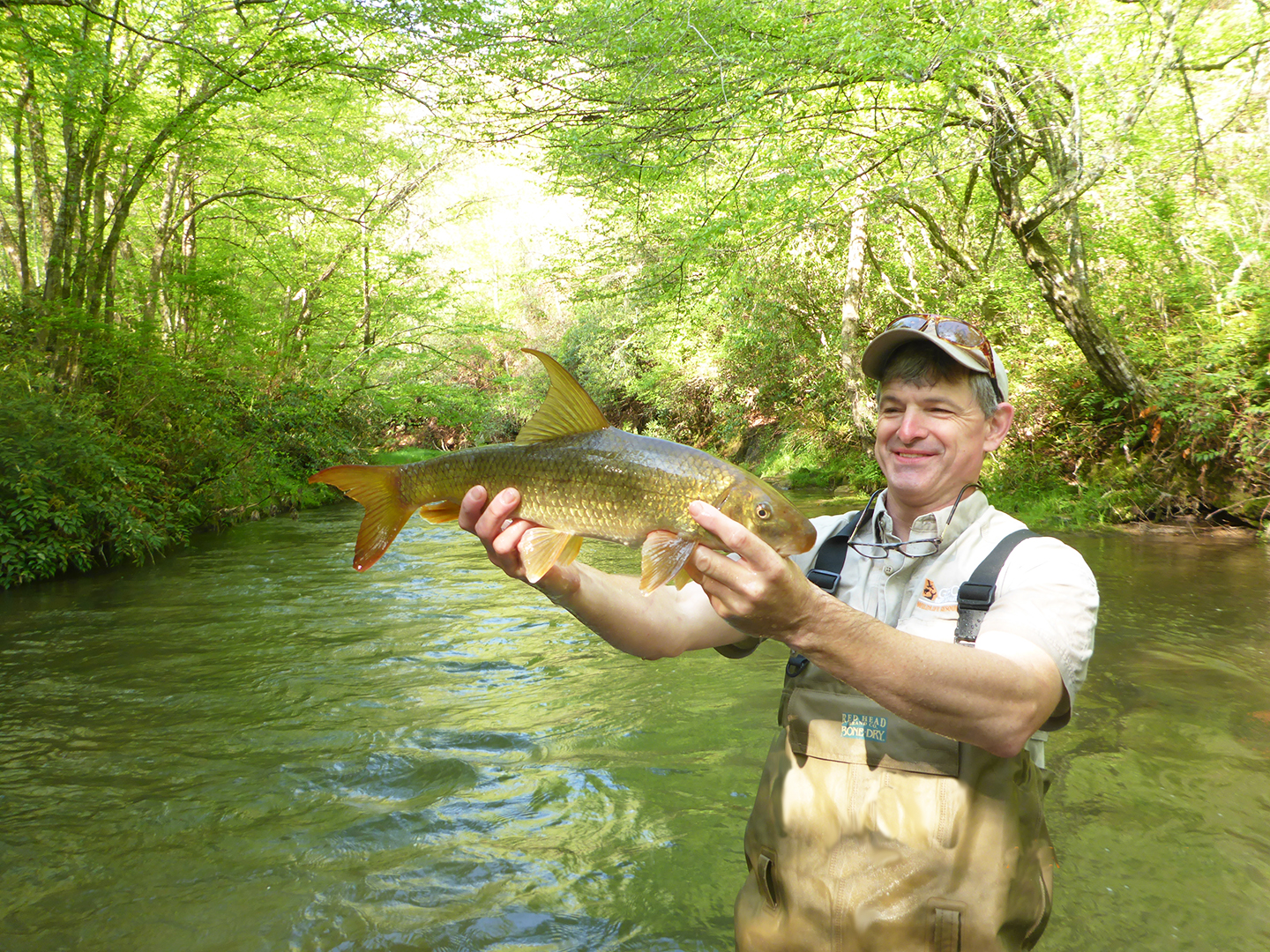Uh Oh, Otters!
Migrating Sicklefin Redhorse, a fish sacred to the Cherokee people, have been swimming up Brasstown Creek into Georgia for weeks on their annual trek to spawn and then return downstream to North Carolina. Nine years ago, a study was initiated to research the stability of this fragile Redhorse population existing in the Hiwassee River Basin.
Dr. Jonathan Davis, a biology professor at Young Harris College, contacted us back then about hosting one of the study sites. Soon, his students were participating in early spring surveys along the creek behind our home.
Despite being “discovered” by biologists in 1992, the Sicklefin Redhorse had long been a valuable staple in Cherokee culture. Centuries ago, the migrating fish were likely guided through a stone weir in the river, allowing a large catch that would be cause for celebration among the villages. Ordinarily, these trout-size fish were caught by bone hook, spear, or basket and often smoked for winter consumption.
Survival of this rare fish is intensely monitored by the Eastern Band of the Cherokee Indians, who are working to restore the Redhorse range. In late 2015, a Candidate Conservation Agreement was signed by the United States Fish and Wildlife Service; the North Carolina Wildlife Resources Commission; Duke Energy Carolinas, LLC; the Tennessee Valley Authority; the Eastern Band of the Cherokee Indians; and the Georgia Department of Natural Resources. This powerful coalition could ensure protection without resorting to listing this Redhorse as endangered.
In March of 2016 aquatic biologist Brett Albanese, PhD (program manager for the GA DNR Nongame Conservation Wildlife Resources Division) took the lead on field research that required weeks of tagging, examining, and counting these fish through various methods. Soon, a solar-powered tag-reading antennae was installed across the creek bed to relay tracking information on arriving Sicklefin Redhorse and the timing of their passage.
Early spring in these Georgia mountains can offer the research teams bright, warm days of snorkeling while installing equipment, or frigid, wind-whipped hours of miserable hand-seining. Just ask DNR veterans Zach Abouhamdan, Peter Dimmick, Deb Weiler, and Brett, who have experienced every extreme. Daily results can vary from a torrent of tagged fish shooting over the antennae to an entire day’s count of a single Sicklefin.
That count was today, after Monday’s fyke netting was scuttled by a hungry visitor. A sly Northern River Otter made quick work of the fish pen net with those sharp teeth. This was the first otter detected on this section of Brasstown Creek in over ten years and that appearance has not sparked joy. Ol’ otter may remain nearby, watching for the next opportunity. Very much like another of the waterway’s rare-local-creek-dwellers, the hellbender salamander, who manages to conceal that two-foot-long reptilian bod along the water’s edge until dinner comes swimming by.
Brett Albanese says that’s nature’s balance. That a healthy Sicklefin Redhorse population is still supporting the food chain, even when that means a sacred fish becomes a wily otter’s lunch.
Find out more about Sicklefin Redhorse research via the links below:
GA DNR
https://georgiabiodiversity.org/natels/profile?es_id=19728
EBCI Natural Resources ᏧᎾᎩᏝ Tsu-n(a)-gi-tla (Sicklefin Redhorse)
https://cherokeenaturalresources.com/sicklefin-redhorse
Peter Dimmick’s fyke netting video: https://www.youtube.com/watch?v=roQX8OsUHI8&feature=youtu.be
Report by Dr. Jonathan Davis
https://sicklefin.files.wordpress.com/2019/02/2019-sicklefin-meeting-albanese.pdf
